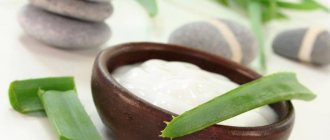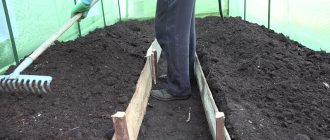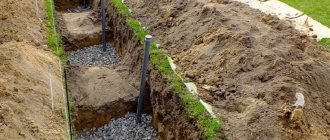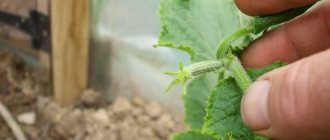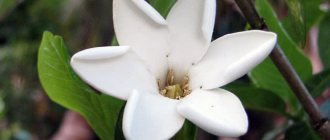Main reasons for transplantation
Aloe is a plant that does not like a small pot. It gradually develops a wide root system, and a cramped pot will be lethal for it. Therefore, aloe needs to be transplanted into another pot correctly and on time.
Aloe indoors
Aloe transplantation is carried out for the following reasons:
- Aloe should renew itself and take on a beautiful appearance. Decorative properties largely depend on how wide the pot it grows in. In small pots, the flower will wither and its roots will rot if not watered correctly.
- At times, a large number of lateral shoots grow around the central bush. It is recommended to replant it so that the shoots do not take away its juices. Replanting rejuvenates the plant and makes it more resilient.
- The most common reason for repotting is when the pot is not the right size for the plant. The flower must be replanted immediately if the roots begin to make their way through the drainage system.
- As the aloe grows, the soil becomes depleted. If it contains few nutrients and microelements, growth gradually slows down and the lower leaves die off. The plant gradually loses its decorative properties. Aloe will be beautiful if the soil is enriched with nutrients and valuable microelements.
- If watered incorrectly, the roots gradually begin to rot. In this case, the flower needs to be replanted urgently.
What kind of plant is this and why replant it?
Aloe belongs to the genus of succulents. These are plants that accumulate moisture in their leaves along with other useful substances. In nature, it grows on sandy soils in dry climates. At home, it needs to be replanted periodically when the pot becomes too crowded. You can also propagate agave in several ways to get even more healthy juice.
The best time to replant a plant is spring and summer. During the cold season, life processes slow down, and the flower may not take root. However, propagation by cuttings can continue almost all year round.
Optimal transplant frequency
The succulent grows quickly. Young specimens need to be replanted annually (up to the age of 5 years). In adulthood, growth slows down. Therefore, it is recommended to replant the agave once every three years. More frequent transplants are harmful, because they injure the indoor flower.
How to replant a cactus: options at home
In winter or autumn, the indoor flower does not need to be disturbed. It is best to plant in early spring in March (before the active growing season begins) or during the growing season (summer). At the beginning of spring or summer, the bush will quickly restore growth and become accustomed to the new soil.
Note! If aloe was replanted in winter or autumn, it may not be able to withstand the stress associated with changing soil and may even die.
Aloe transplant
Transplant methods
How to transplant cyclamen: options at home and in different ways
Readers are interested in how to plant aloe. There are many ways to propagate aloe. They depend on what plant is being transplanted, how old it is, and whether there are shoots.
Seeds
Transplanting aloe using seeds is quite labor-intensive. Its viability depends on how to grow aloe from seeds. It is better to germinate agave at the end of February. The temperature during transplantation should not be below 21 degrees.
Sowing of seeds is carried out in a specially prepared soil mixture of turf, leaf soil, and sand. The sprouts are planted in shallow boxes (the composition of the soil in them should be identical).
After the seedlings grow up, they are transplanted into pots. A year later they are planted again, because... the root system grows enough and becomes cramped. The roots are damaged.
Jigging of the shoot
Flower growers are interested in how to plant aloe shoots. It is best to replant cuttings in the summer. The healthiest shoots growing along the stem should be selected.
Aloe shoots
Note! You need to cut off the lateral shoots at the very base. Dry them slightly in a warm place for 5 days and treat the cut area with charcoal.
Properly treated cuttings are planted in damp sand. Watering increases when the first small roots appear. After a week, the cuttings are planted in flower pots.
There are many ways to plant aloe shoots without roots. You can cut or pinch off the agave leaf at the base. Just like the cutting, it is dried so that the cut area dries out. Since it is necessary to grow aloe from leaves in moist soil, they are planted in the soil to a depth of about 3 cm in wet sand.
Aloe has babies. They are at the very base of the root and have their own roots. This feature greatly facilitates the transplantation process. The baby is dug up, while ensuring the safety of the root system. Then it is carefully transplanted into moistened sand.
Mature plant
It would be useful to know how to plant an aloe plant at home. A newly purchased flower should be kept in a pot for 3 weeks before replanting. During this period, the agave adapts to new growing conditions. It is better to place the pot separately from other flowers.
Aloe transplant
The first transplant is done only when the roots fill the entire pot. The diameter of the new container is 2 or 3 cm larger than the old one.
Attention! An adult plant is transplanted only by transshipment.
You need to know how to transplant aloe into other pots in the least traumatic way. It is completely removed from the old pot. This must be done as carefully as possible so that the earthen lump does not collapse. Then this lump is installed in the new pot exactly in the central part.
The resulting gap between the walls of the pot and the lump is filled with fresh soil. It must be compacted with a stick or pencil. You also need to add earth on top.
After transplantation, the plant is not watered for two days. During this time, minor root injuries will disappear. Then the agave is watered moderately.
Transplantation into open soil
This procedure can only be done in summer conditions and only in a warm region. For the plant to feel normal, the air temperature should be approximately 23 degrees. The sequence (algorithm) of actions when transplanting agave into open soil is as follows:
- You need to choose a good place for transplantation. It should be illuminated, but without direct sunlight.
- The plant should not get wet in the rain. You should take care of reliable shelter.
- The hole should be slightly larger than the pot in which the plant was previously located.
- A small amount of sawdust or fine coal should be poured onto the bottom. Expanded clay and the finished mixture are sprinkled on top.
- The aloe is placed in the hole and covered with the mixture.
- If the plant grows in open ground, then it does not need to be fed.
How to plant and propagate succulents
Often, replanting agave is caused by the sprouting of shoots that deplete the soil and the mother plant. In nature, aloe reproduces through young shoots, forming impenetrable African thickets. The call of nature also affects the indoor cultivation of aloe.
The shoots can be removed from the pot without replanting the main specimen. The preparation process includes abundant watering, preparation of flowerpots and soil for aloe seedlings. The sprouts are planted in separate containers, similar to transplanting an adult specimen. It is noteworthy that this procedure can be carried out at any time of the year. Young shoots take root well even in winter, since they have their own root system. Planting “babies” is the most common way of propagating aloe.
Popular beliefs say that a succulent not only lives for a hundred years, but also blooms once every hundred years.
Aloe is also propagated by cuttings. In this case, the generally accepted rules for cutting succulent plants are followed. The cut or plucked leaf is left in the open air for several days so that the cut surface is completely dry. Then the cuttings are planted in wet sand to a depth of no more than one centimeter. There is no need to set up a mini-greenhouse. Succulents have a sufficient supply of moisture in their tissues and rot in greenhouse conditions. Soon enough, the first bud will hatch and the leaf of a new seedling will sprout. The cuttings need to be planted in individual containers after the third leaf appears.
In addition, you can transplant aloe without roots. Flower growers use this method when rejuvenating an old plant. The scarlet sheds its lower leaves, the trunk becomes bare and eventually lies down because it cannot support the weight of the thick leaves. Knowing how to replant an aged aloe without a long stem and root, you can get a new mature plant.
In this case, the stem is cut below the leafy part. The cut part of the aloe is dried in the open air and placed in water. The first roots will soon sprout. After this, the seedling is planted in another pot with a complete substrate for succulent plants.
Preparing for transplant
How to plant an orchid: examples in a pot and at home
The bush must be replanted carefully, following all the necessary recommendations. If everything is done correctly, the plant will not be injured, will survive the soil change well and will resume growth very quickly.
Attention! Before transplanting, aloe needs to be watered abundantly for several days. In this case, it can be easily removed from the pot without damaging the root system.
Choosing a pot
The choice of pot must be approached very responsibly. Its size completely depends on the reason for which the plant is transplanted. If it is young, has a powerful and well-developed root system, then a larger container needs to be selected. If the aloe has young shoots, then the plant can be left in the same box (provided that the shoots have been removed). You can take a slightly smaller pot if the transplant is done due to rejuvenation (in this case, the affected or dead parts are removed).
All pots should have holes in the bottom for drainage. If they are present, the soil will not become sour. The old pot must be washed before further use.
Aloe in a pot
Soil quality
The new soil should be as close as possible to the previous one. Ideal if you buy it in one store. The packaging of aloe soil should indicate that the substrate is prepared specifically for succulents or cacti. The soil must be loose. When preparing soil for aloe yourself, sand is added to the leaf and turf soil.
The right substrate: choosing soil for aloe
- The tropical inhabitant is not picky about the composition of the soil and does not need to fill it with nitrogen.
- The main requirement is that the lighter the soil, the better.
- It will respond to compacted growth with slow growth, thin, weak leaves that turn yellow at the tips.
- Acidity – slightly acidic reaction (at pH 5.0-6.0), neutral (at pH 6.0-7.0).
Substrate options may be as follows:
- turf soil, leafy soil, coarse sand with a handful of peat (in a ratio of 2:1:1);
- forest soil (leaf), coarse sand (3:2) plus charcoal;
- clay-turf soil, sand, forest leaf soil (1:1:1) plus 1/5 of slightly acidic peat.
Advice. A plant that does not like stagnant moisture needs a drainage layer. To organize it, you will need river pebbles, with a fine fraction of expanded clay, brick chips, smaller shell rock, perlite, and clay shards.
Transplantation at home
Flower growers need to know how to replant aloe bushes at home. Replanting should not be too frequent. But you can’t put it off for more than three years. How to plant an aloe plant determines its lifespan. If it is kept in stagnant and especially acidified soil, it will begin to hurt.
During repotting, one hand holds the houseplant at its base. The other is that you need to hold the flowerpot itself. Dry, old and rotten roots are removed immediately.
When transplanting aloe, you do not need to take an overly large pot. It must be in the most suitable conditions for it. Aloe can bloom very rarely.
Further flower care
The plant moves to partial shade for a week or two. In a shaded position, the flower heals injuries and gets used to new conditions. Injuries during transplantation are always inevitable, even if the plant was transplanted very carefully.
Location and lighting
The plant needs a significant amount of sunlight. In spring, it is necessary for aloe to get used to intense sunlight. At lunchtime, it is enough to hang a small screen on the window. This technique avoids burns.
Aloe on a sunny windowsill
Important! In summer, during very intense heat, the plant must be hidden from the sun.
It’s good if aloe grows on a balcony or terrace in summer. In these conditions, it must be hidden from the rain. Excess moisture causes the flower to rot.
In autumn, when daylight hours decrease, aloe needs additional lighting. A fluorescent lamp is suitable for this. It needs to be turned on as soon as the sun disappears below the horizon.
Temperature
The optimal temperature should not be higher than 30 degrees. In winter, you need to ensure that it does not fall below 12 degrees. Aloe does not withstand frost, so a sharp drop in temperature in winter rooms should not be allowed.
Humidity
The plant tolerates dry indoor air well. However, if dryness is combined with elevated temperatures, it needs to be watered more often and sprayed periodically. In winter, when the central heating is on, you should use humidifiers or place small containers of water near the pot.
The plant should not be allowed to develop in damp rooms. The root system and stems will suffer from this.
Watering
Watering is highly dependent on the ambient temperature. If in summer the temperature reaches 30 degrees, then the plant needs to be watered every other day, sometimes daily. In the cold season, the temperature can drop to 12 degrees, in which case aloe is watered once a week.
When growing, the soil is watered at the root, and not from above. Water that gets on the leaf rosette causes the stem to rot. The main criterion for the need for watering is complete drying of the soil.
An adult plant is fed no more than once every 3 weeks. The best would be a special fertilizer for cactus.
The soil
It is necessary to monitor the condition of the soil. If it turns sour, the bush urgently needs to be replanted. You need to purchase the substrate at flower shops - there are kits specially designed for succulent plants.
Important! Aloe needs the soil to always be loosened. Loosening should be done carefully so as not to damage the roots.
If the plant does not take root
There are several reasons why the plant does not take root:
- Inappropriate soil composition. You urgently need to replace it or prepare a mixture with the correct ratio of components. The best option is to purchase a ready-made mixture for succulent species.
- Poor quality planting material when transplanting cuttings. This happens if the cutting is taken from a large plant. In this case, the agave needs to be replanted again.
- Incorrect care. It is necessary to carefully follow the recommendations of gardeners and promptly eliminate even the smallest signs of the disease.
Diseases, pests
Agave can be affected by dry or gray rot. Diseases manifest themselves as drying or deformation of the leaves and rotting of the roots. If these signs are detected, the agave needs to be urgently transplanted.
Aloe can be affected by the following pests:
- Spider mite. It is difficult to notice due to its small size. The main sign is that the finest cobwebs appear on the leaves. The leaves turn pale and dry. At a late stage of the disease they become scarlet.
- Scale insects inhibit the process of photosynthesis. Red spots appear on the leaves.
- A sign of a mealybug is a coating of leaves.
Pests can be controlled using special antiparasitic drugs.
Aloe is an unpretentious, beautiful and useful plant. If you take good care of it, there will never be any problems with it. Its longevity will depend on proper transplantation.
